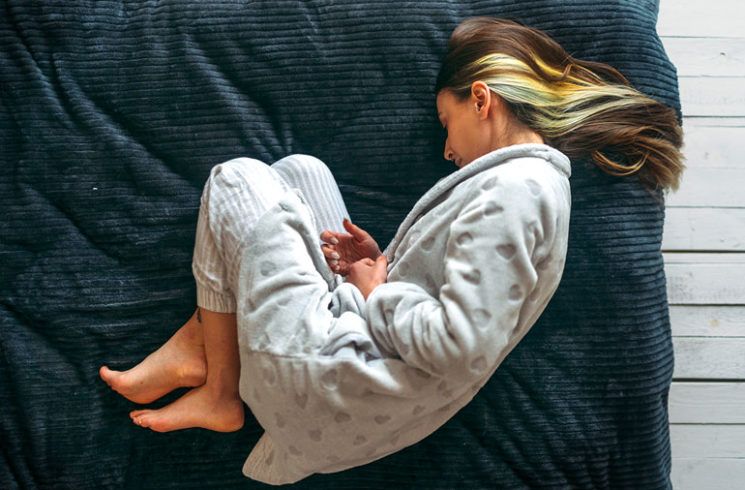News
Article
HS May Cause Skin Changes That Might Lead to Peripheral Neuropathy
Author(s):
Hidradenitis suppurativa (HS) may involve skin or nerve ending changes that could lead to peripheral neuropathy and changes in the transduction of specific stimuli.
The pain that patients with hidradenitis suppurativa (HS) experience is the result of multiple pain mechanisms, which means they might require multimodal therapeutic strategies, according to a study published in JAMA Dermatology.
HS is characterized by painful nodules, abscesses and scarring tunnels, and patients with HS consistently rate pain as an important symptom of the disease. Characterization of sensory profiles might improve understanding of pain mechanisms in HS and enable identification of effective pain management strategies, according to the authors.
First, the researchers aimed to characterize somatosensory profiles in patients with HS at clinically affected and nonaffected areas compared with pain-free reference data.
HS is a chronic inflammatory disease defined by recurrent painful nodules, abscesses, and scarring tunnels. Pain is regularly rated as the most important symptom that leads to negative psychological impact, decreased quality of life, and a raised risk of long-term opioid use.
woman lying on side stock photo | © iStockPhoto.com

This was a cross-sectional study conducted at the Emory University Dermatology Clinic. Adults with dermatologist-diagnosed HS and at least 1 painful HS lesion during the testing period were enrolled between September 10, 2020, and March 21, 2022. Patients with other diagnosis that might contribute to pain or neuropathy weren’t included, and data analysis was conducted between March and April 2022.
Then, researchers performed quantitative sensory testing on HS lesions and control skin following a standardized protocol.
The quantitative sensory outcomes were comprised of innocuous thermal and mechanical sensitivity (cold, warmth, and light touch detection thresholds), noxious thermal and mechanical sensitivity (cold, heat, pinprick, and deep pressure pain thresholds and suprathreshold pinprick sensitivity), temporal summation of pinprick, paradoxical thermal sensations, and dynamic mechanical allodynia (pain upon light stroking of the skin).
HS lesion sensitivity was compared with sensitivity in a control location (the hand) and in pain-free controls using t tests.
The study included 20 participants with a median age of 35.5 (IQR, 30.0-46.5) years, most of whom were women (15 [75%]). A total of 2 participants (10%) self-identified as Asian, 11 (55%) as Black, 6 (30%) as White, and 1 (5%) as more than 1 race or ethnicity.
HS lesions were insensitive to innocuous cold and warmth, noxious heat, and light touch (t = -5.69, -10.20, -3.84, and 4.46, respectively; all P < .001), compared with site-specific reference values from healthy, pain-free control participants. HS lesions also showed significant hypersensitivity to deep pressure pain (t = 8.36; P < .001) and cutaneous pinprick (t = 2.07; P = .046).
Also, hypersensitivity to deep pressure pain was also seen in the control site (t = 5.85; P < .001). Additionally, hypersensitivity to repetitive pinprick (5[2.6%]), paradoxical thermal sensations (3 [15%]), and pain upon light stroking of the skin (10 [50%]) were changes in pain processing that are seen often in neuropathic and nociplastic pain conditions, which a subset of patients with HS displayed.
“For some patients, central nervous system changes in somatosensory processing may also occur, but confirmatory evidence is needed. Better understanding of neuropathic and nociplastic mechanisms in HS pain could lead to individually tailored treatments,” wrote the researchers.
Because HS has local inflammation and the fact that testing was performed in clinically painful lesions, the thermal insensitivity of HS lesions was unexpected at first to researchers.
“The hyposensitivity to heat pain could, however, be explained by processes that occur in advanced stages of HS, such as local tissue destruction and tunnel formation,” continued the researchers.
Some important limitations were noted. Quantitative sensory testing was intended to characterize neuropathic states; its use has not been validated widely in inflammatory skin diseases, and it has the capability to be affected by patient biases. Even though the researchers’ findings imply dysfunction of cutaneous nociceptors, it did not include tissue collection or other conventional techniques for diagnosing peripheral neuropathy.
“Additional studies that evaluate the association between QST [quantitative sensory testing] findings and other measures of small nerve fiber function across a broader population of patients with HS are needed to further elucidate cutaneous sensory changes that may contribute to pain and itch in HS,” concluded the study authors.
Reference
Alsouhibani A, Speck P, Cole EF, et al. Quantitative sensory testing to characterize sensory changes in hidradenitis suppurativa skin lesions. JAMA Dermatol. Published online September 13, 2023. doi:10.1001/jamadermatol.2023.3243




